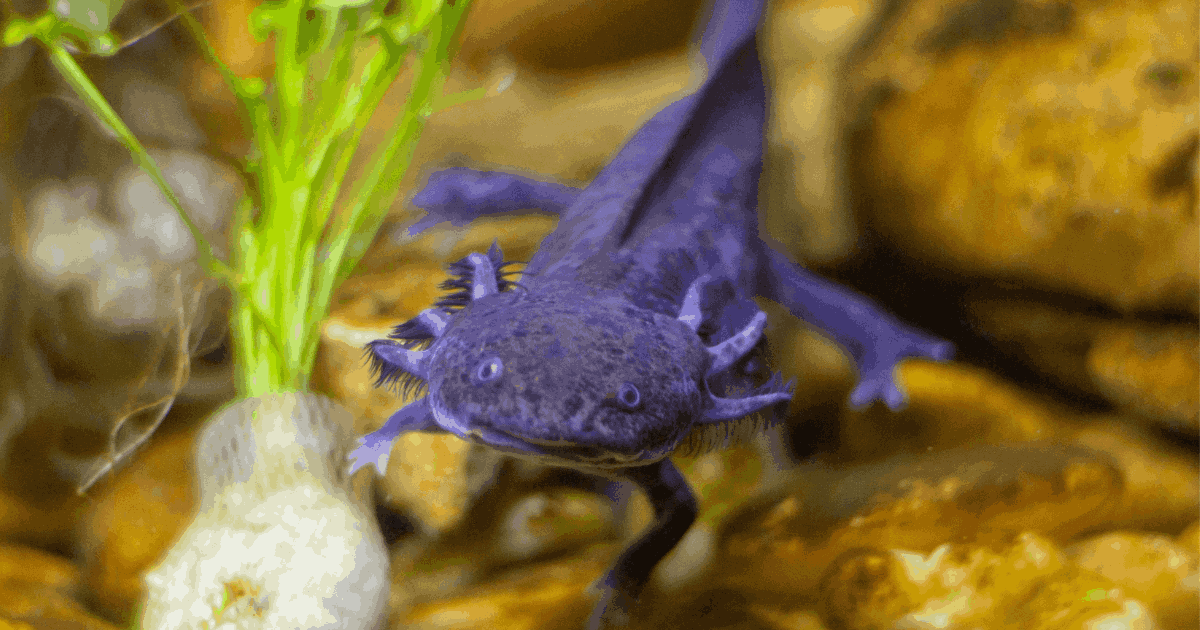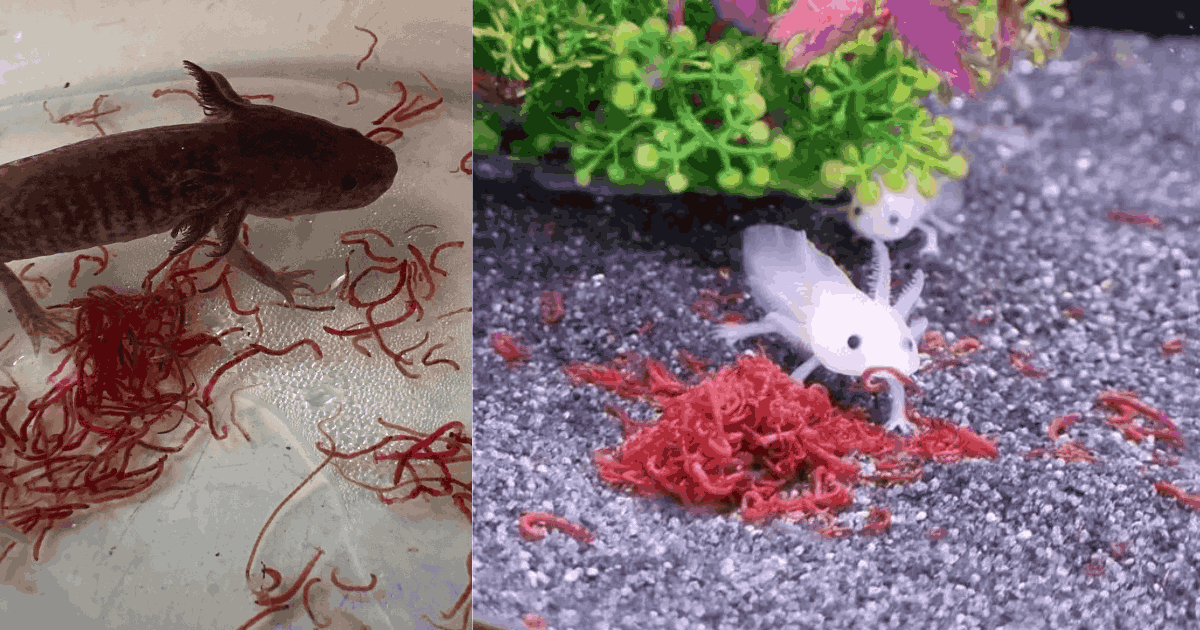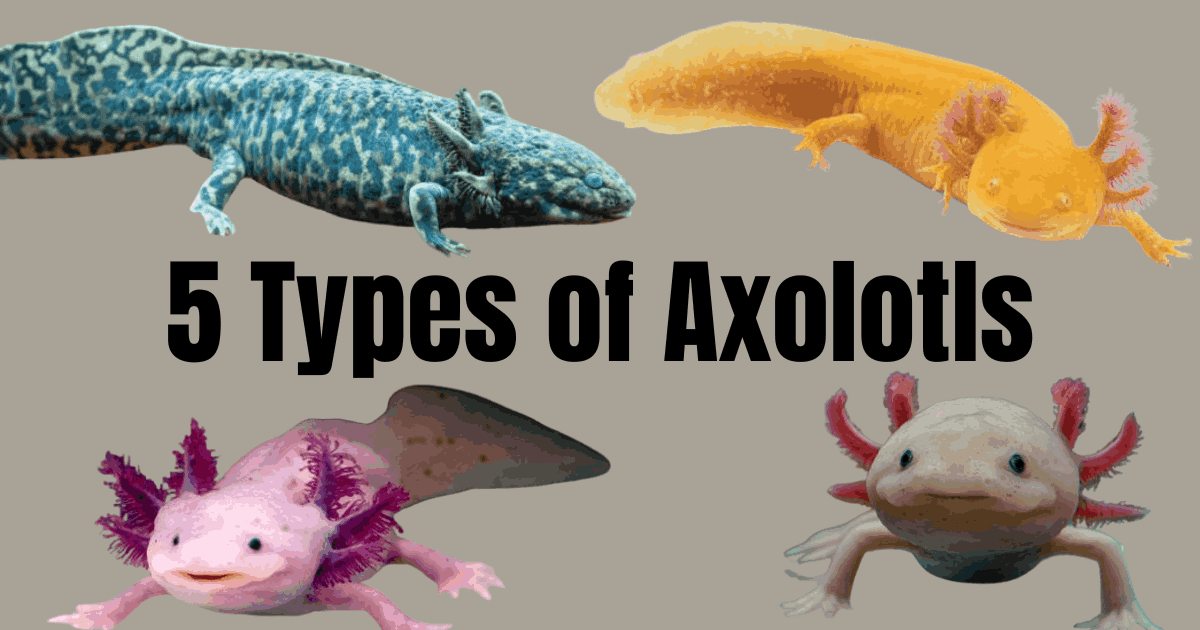Are you ready to dive into the enchanting realm of axolotls? These fascinating creatures have captured the hearts of animal enthusiasts worldwide with their unique appearance and intriguing behaviors. In this article, we’ll take a closer look at five different types of axolotls, shedding light on their distinct characteristics and charm. Whether you’re a seasoned axolotl aficionado or a curious newcomer, join us on this journey to discover the diversity within this captivating species
Contents
- What Are Axolotls?
- 5 Types of Axolotls
- Why Axolotls are Special
- How to Choose the Right Axolotl for You
- Setting Up Your Axolotl’s Habitat
- Feeding Your Axolotl
- Common Health Issues and Solutions
- Conclusion
- FAQ
What Are Axolotls?
Understanding Axolotls
Axolotls, often called “Mexican walking fish,” are a type of neotenic salamander, which means they retain their juvenile features throughout their life. Unlike most amphibians, axolotls do not undergo metamorphosis; instead, they keep their gills and remain aquatic.
The Unique Characteristics of Axolotls
What sets axolotls apart are their remarkable features. They have external gills that fan out from the sides of their heads, giving them a distinct appearance. Their ability to regenerate lost limbs, tails, and even parts of their heart and brain is nothing short of miraculous.
5 Types of Axolotls
1. Wild Type Axolotls

Appearance and Coloration
Wild type axolotls are the closest to their natural ancestors, displaying a dark, mottled coloration that helps them blend into their natural habitat.
Personality Traits
These axolotls are known for their curious nature and active behavior. They enjoy exploring their surroundings and interacting with their environment.
Specific Care Tips
To care for a wild type axolotl, ensure their tank has plenty of hiding spots and maintain a consistent water temperature between 60-64°F (15-18°C).
2. Leucistic Axolotls

Appearance and Coloration
Leucistic axolotls have a pale pink or white body with dark eyes, giving them a ghostly yet adorable appearance. They are often mistaken for albinos, but their dark eyes set them apart.
Personality Traits
Leucistic axolotls are gentle and more reserved compared to their wild type counterparts. They appreciate a calm and quiet environment.
Specific Care Tips
Keep their habitat stress-free by minimizing sudden changes in water conditions and providing ample hiding places to retreat.
3. Albino Axolotls
Appearance and Coloration
Albino axolotls are completely white or golden with pinkish gills and red eyes. Their striking appearance makes them popular among axolotl enthusiasts.
Personality Traits
These axolotls are known for their docile nature and are less active, often seen lounging at the bottom of the tank.
Specific Care Tips
Due to their lack of pigmentation, albino axolotls are more sensitive to light. Ensure their tank is dimly lit and avoid direct sunlight.
4. Golden Albino Axolotls

Appearance and Coloration
Golden albino axolotls have a shimmering golden hue that can brighten up any aquarium. Their vibrant color is due to a genetic variation that produces a yellow pigment.
Personality Traits
Golden albinos are friendly and curious, often coming to the glass to greet their owners. They are quite interactive and enjoy exploring.
Specific Care Tips
Maintain optimal water conditions and provide a varied diet to keep their colors vibrant and their health robust.
5. Melanoid Axolotls

Appearance and Coloration
Melanoid axolotls have a dark, uniform color without the iridescent sheen seen in other types. This makes them appear almost black.
Personality Traits
These axolotls are known for their bold and active behavior. They are less shy and more likely to interact with their environment.
Specific Care Tips
Ensure their tank is spacious and enriched with various stimuli like plants and tunnels to keep them engaged.
Why Axolotls are Special
Unique Regenerative Abilities
One of the most fascinating aspects of axolotls is their ability to regenerate lost limbs, tails, and even parts of their organs. This ability not only makes them unique among pets but also subjects of extensive scientific research.
Interactive and Engaging Pets
Axolotls are more interactive than you might expect from an aquatic pet. They often recognize their owners and can even be trained to take food from your hand.
How to Choose the Right Axolotl for You
Assessing Your Environment
Before choosing an axolotl, consider your living space and ability to maintain a stable environment. Axolotls require specific water conditions and a quiet, low-stress habitat.
Matching Axolotl Traits with Your Lifestyle
Each type of axolotl has its own personality traits. Consider whether you prefer an active, interactive pet or a more laid-back companion to find the best match for you.
Setting Up Your Axolotl’s Habitat
Tank Size and Setup
A 20-gallon tank is a good starting point for one axolotl. Ensure the tank has a secure lid, as axolotls can sometimes try to escape.
Ideal Water Conditions
Keep the water temperature between 60-64°F (15-18°C) and maintain a pH level of 6.5-7.5. Use a good quality water filter to keep the tank clean.
Decorations and Hiding Spots
Include plenty of hiding places such as caves, plants, and tunnels. Avoid sharp decorations that could injure your axolotl.
Feeding Your Axolotl

Types of Food
Axolotls thrive on a diet of worms, small fish, and specially formulated pellets. Occasionally, you can offer them treats like shrimp or bloodworms.
Feeding Schedule and Tips
Feed your axolotl 2-3 times a week, adjusting the amount based on their size and activity level. Remove any uneaten food to prevent water contamination.
- Read More- How Long Can an Axolotl Go Without Food
Common Health Issues and Solutions
Recognizing Illness
Common signs of illness include loss of appetite, changes in gill color, and abnormal swimming behavior. If you notice any of these signs, consult a vet specializing in amphibians.
Preventative Measures
Regularly test the water quality and maintain a stable temperature to prevent stress and illness. Keep the tank clean and feed a balanced diet.
Treatment Options
For minor health issues, you can often treat your axolotl with over-the-counter medications available at pet stores. For more serious conditions, seek professional veterinary care.
Conclusion
Owning an axolotl is a truly unique and rewarding experience. Their fascinating behavior, distinctive appearance, and relatively low maintenance make them ideal pets for both beginners and experienced aquarists. By providing the right care and environment, you can enjoy a long and joyful relationship with these incredible creatures.
FAQ
Q: What is an axolotl?
A: An axolotl is a type of salamander native to Mexico. They are known for their unique appearance and ability to regenerate body parts.
Q: What are the different types of axolotls?
A: The article highlights five different types: wild type, leucistic, albino, melanoid, and GFP (Green Fluorescent Protein).
Q: What is a wild-type axolotl?
A: Wild-type axolotls have a natural coloration resembling their wild counterparts. They typically have dark brown or black coloring with speckles.
Q: What is a leucistic axolotl?
A: Leucistic axolotls lack pigmentation in their skin, giving them a pale, almost white appearance with black eyes.
Q: What is an albino axolotl?
A: Albino axolotls have a lack of melanin pigment, resulting in a pinkish hue with translucent skin and red eyes.
Q: What is a melanoid axolotl?
A: Melanoid axolotls have increased melanin pigmentation, giving them a darker coloration than wild-type axolotls.
Q: What is a GFP axolotl?
A: GFP (Green Fluorescent Protein) axolotls have been genetically modified to express a fluorescent protein, causing them to glow under certain types of light.
Q: Are axolotls good pets?
A: Yes, axolotls can make fascinating and low-maintenance pets for enthusiasts willing to provide the proper care and environment. They’re unique and captivating creatures to keep in an aquarium.


